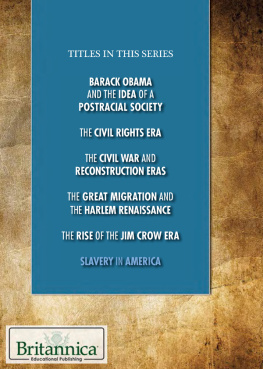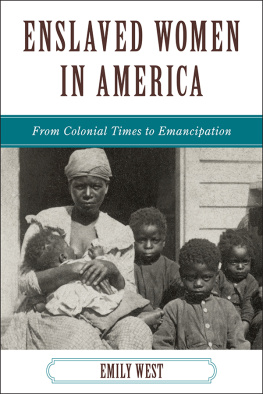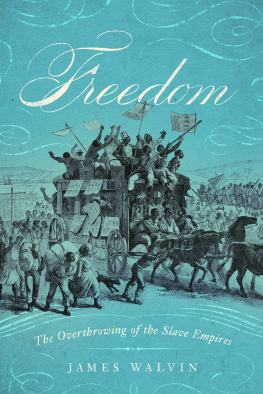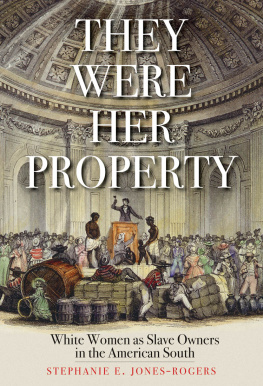Terri L. Snyder is professor of American studies at California State University, Fullerton, and the author of Brabbling Women: Disorderly Speech and the Law in Early Virginia.
The University of Chicago Press, Chicago 60637
The University of Chicago Press, Ltd., London
2015 by The University of Chicago
All rights reserved. Published 2015.
Printed in the United States of America
24 23 22 21 20 19 18 17 16 15 1 2 3 4 5
ISBN-13: 978-0-226-28056-1 (cloth)
ISBN-13: 978-0-226-28073-8 (e-book)
DOI: 10.7208/chicago/9780226280738.001.0001
Library of Congress Cataloging-in-Publication Data
Snyder, Terri L., 1956 author.
The power to die : slavery and suicide in British North America / Terri L. Snyder.
pages cm
Includes bibliographical references and index.
ISBN 978-0-226-28056-1 (cloth : alk. paper)ISBN 978-0-226-28073-8 (e-book) 1. SlavesSuicidal behaviorNorth America. 2. SlaveryNorth AmericaHistory. 3. SuicideUnited StatesHistory. I. Title.
E443.S594 2015
306.3'62097dc23
2015012390
This paper meets the requirements of ANSI/NISO Z39.48-1992 (Permanence of Paper).
This book has been long in the making and has had many influences, and it is a pleasure to express my gratitude to those who helped to shape its final form. First thanks go to the anonymous readers for the University of Chicago Press. As models of scholarly reviewfrank in their criticism, sincere in their praisethey pushed me to rethink the arguments and structure of the manuscript. I am also indebted to my editors at Chicago. Robert Devens saw promise in the project, and Tim Mennel graciously worked with me through its conclusion. Thanks as well to Russ Damian and Nora Devlin for editorial assistance and to Michael Koplow for expert copyediting.
I am also grateful to those individuals who commented on previously published portions of the manuscript. In particular, Vincent Brown, Edward Linenthal, and Mark M. Smith offered perceptive observations on the article that preceded the book; I thank the Journal of American History for permission to repurpose that material here. I presented parts of this project across and outside of the United States and benefited from thoughtful commentary by Trevor Burnard, Edward Countryman, John Demos, Susan E. Gray, Margaret Newell, and James Sidbury and profited from the observations of audiences at meetings of the European Early American Studies Association in Venice; the Omohundro Institute of Early American History and Culture in Quebec City; the Western Association of Women Historians in Tuscon; the Ohio Seminar for Early American History at the University of Ohio in Columbus; the Making Books, Shaping Readers Project at University College, Cork, Ireland; the California American Studies Association at Soka University, Alisa Viejo; and the American Studies Graduate Student-Faculty Colloquium at California State University, Fullerton.
I have been fortunate to have enjoyed generous institutional support that helped me bring this project to completion. A Faculty Award from the National Endowment for the Humanities provided me with a year to devote to research and writing this book. Fellowships from the Huntington Library, the Library Company of Philadelphia, and the Virginia Historical Society allowed me to conduct research in their rich collections, while College of Humanities and Social Sciences Deans Summer Research Stipends and Faculty Research Grants from California State University, Fullerton, facilitated travel to state archives and supported summer writing. I am also grateful to Roy Ritchie and Steven Hindle, respectively the former and current W. M. Keck Foundation Director of Research at the Huntington Library, for generously providing me with an office refuge in which to work out my thoughts and plans for this book.
Librarians and archivists were generous in discussing their collections with me and pointing me in useful directions. I owe hearty thanks to Jackie Brown at the British Library; to Connie King, Nicole Joniec, and Phil Lapansky at the Library Company of Philadelphia; to Minor Weisiger and Sandy Treadway at the Library of Virginia; to Frances Pollard and Jamison Davis at the Virginia Historical Society; to Bryan Collars at the Department of Archives and History in South Carolina; to Leslie Hall of the Wellcome Institute; to Matthew A. Harris at the Special Collections Library at the University of Kentucky; and to the staff at the State Archives of North Carolina, the South Caroliniana Library, and the South Carolina Historical Society. More locally, I owe a huge thanks to Juan Gomez, Leslie Jobsky, Brian Moeller, Frank Osen, Jaeda Snow, and Catherine Wehrey at the Huntington Library. I am also grateful for the tireless efforts on my behalf by the staff of CSUFs Pollak Library. Stacy Caron patiently filled my numerous interlibrary loan requests, while near the end of this project, when an earthquake had closed the upper stacks of the library, David Duncan, Long Lammy, Kevin Phillips, and Christopher Salomone cheerfully and quickly paged many book requests for me.
This project has been greatly enriched by conversations with fellow scholars and generous colleagues. On this score, I am indebted to Rick Bell, Sharon Block, Holly Brewer, Kathy Brown, Thomas E. Buckley, S.J., Kevin Dawson, Nina Dayton, Shannon Doyle, Richard Godbeer, Sarah Hand-Meacham, Alison Kibler, Isabell Klaiber, Mary Helen McMurran, Simon Newman, Mary Beth Norton, Charles Romney, David Silkenat, Diane Miller Sommerville, and Roxann Wheeler. K. Dian Kriz, Katherine M. Smith, and Farid Leonardo Surez were extraordinary in helping me parse some of the visual materials used in this book. At California State University, Fullerton, I am lucky to have enriching and discerning colleagues, both within and beyond the Department of American Studies, in Dustin Abnet, Mitch Avila, Allan Axerad, the late Gordon Bakken, Erica Ball, Jesse Battan, Renae Bredin, April Bullock, Angela Della Volpe, Nancy Fitch, Sheryl Fontaine, Margaret Garber, Stephanie George, Adam Golub, Joe Gonzalez, Wayne Hobson, John Ibson, Carrie Lane, Elaine Lewinnek, Karen Lystra, Craig McConnell, Mike Norton, Andrea Patterson, Michael Steiner, Pamela Steinle, Susie Woo, and Leila Zenderland. Special thanks as well to Karla Arellano and Liz Ortiz for their administrative expertise and for their many acts of assistance on my behalf. I have benefited tremendously from conversations with my students, especially Melissa Anderson, Jamal Batts, Adriana Ruvalcaba, John Carlos Marquez, and Allison Wanger, and take great pleasure not only in thanking them, but also in watching their futures unfold, both within and outside of the academy.








